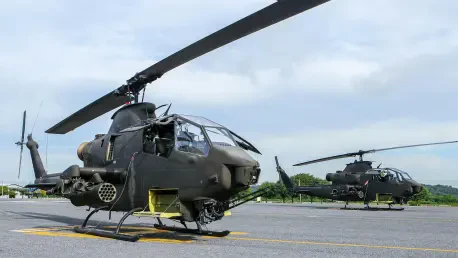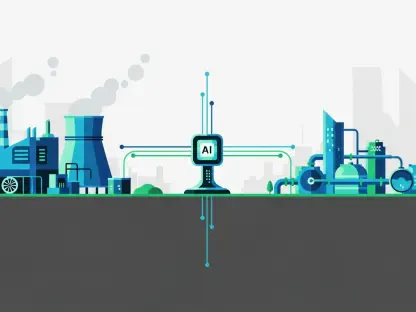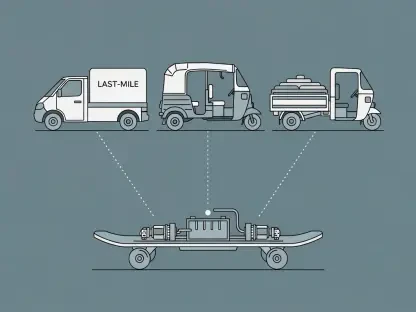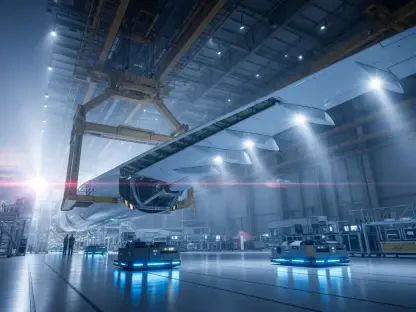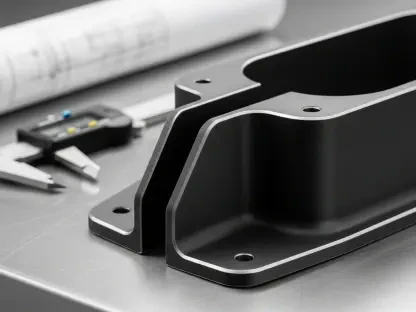In the rugged terrains of India’s border regions, where jagged mountains meet scorching deserts and marshy wetlands, military mobility often determines the success of critical operations, and the challenge of navigating such diverse and extreme landscapes has long pushed defense forces to seek innovative solutions that can withstand nature’s toughest tests. Enter the BvS10 Sindhu, a cutting-edge all-terrain vehicle customized for the Indian Army, promising to redefine how troops and equipment move across hostile environments. This review delves into the vehicle’s groundbreaking features, performance under grueling conditions, and its strategic significance in bolstering India’s defense capabilities.
Background and Development Journey
The BvS10 Sindhu emerges from a strategic collaboration between Larsen & Toubro (L&T), a powerhouse in Indian engineering, and BAE Systems Hägglunds, the original creators of the BvS10 platform. This partnership has birthed a vehicle specifically tailored to meet the unique demands of India’s military landscape, blending global expertise with local innovation. Under the umbrella of India’s “Make in India” initiative, production is centered at L&T’s Armoured Systems Complex in Hazira, Gujarat, emphasizing self-reliance and technology transfer.
This collaboration marks a significant milestone in India’s push toward domestic defense manufacturing. By integrating BAE Systems’ proven design with L&T’s industrial capabilities, the project not only reduces dependency on foreign imports but also builds a robust foundation for future defense technologies. The vehicle’s development reflects a broader global trend of customizing military hardware to suit regional needs, positioning India as a key player in this evolving landscape.
Key Features and Technical Highlights
Unmatched All-Terrain and Amphibious Prowess
The BvS10 Sindhu stands out for its ability to conquer virtually any terrain, from the snow-laden peaks of the Himalayas to the arid expanses of Rajasthan. Whether traversing rocky slopes, muddy swamps, or steep gradients, this vehicle demonstrates exceptional adaptability. Its amphibious capability further enhances its utility, allowing seamless operations in flooded zones or coastal areas, a critical asset for missions in varied geographic conditions.
Such versatility addresses a core need for the Indian Army, which operates across some of the most challenging environments on earth. The capacity to move personnel and supplies without being hindered by natural barriers ensures rapid response and sustained operations. This feature alone makes the vehicle a vital tool in maintaining strategic readiness along India’s diverse borders.
Modular Design for Diverse Roles
Beyond its terrain mastery, the BvS10 Sindhu boasts an articulated, modular platform that supports a wide array of military functions. It can be configured for personnel transport, command and control hubs, logistics support, or even as a mount for weapon systems. This flexibility allows commanders to adapt the vehicle to specific mission requirements with ease.
The modular approach also means that upgrades or mission-specific modifications can be implemented without overhauling the core system. For an army facing multifaceted threats, this adaptability translates into operational efficiency and resource optimization. The design underscores a forward-thinking approach to military hardware, ensuring relevance in dynamic combat scenarios.
Performance Under Rigorous Testing
Extensive trials have put the BvS10 Sindhu through its paces, from sea-level conditions to high-altitude environments exceeding 15,000 feet. These tests, conducted across India’s climatic extremes, have validated the vehicle’s reliability in both blistering heat and freezing cold. Technical evaluations highlight its robust performance, with minimal downtime even under sustained stress.
Feedback from the Indian Army during these trials has been overwhelmingly positive, noting the vehicle’s stability and endurance in situations where other platforms falter. The ability to maintain operational integrity in such diverse settings speaks volumes about the engineering behind this machine. It stands as a testament to the meticulous customization undertaken to meet specific military standards.
Strategic Applications and Importance
In real-world scenarios, the BvS10 Sindhu proves its worth in India’s strategically sensitive border regions, where mobility can be a decisive factor. From ferrying troops across the icy terrains of Ladakh to supporting logistics in the deserts of western India, the vehicle ensures that operational tempo remains unhindered. Its role in high-altitude warfare, particularly in the Himalayan sector, addresses longstanding logistical challenges.
Additionally, the vehicle’s amphibious nature opens up possibilities for coastal defense and disaster response missions. In flood-prone areas or during humanitarian crises, it can deliver aid and personnel where conventional vehicles cannot venture. This dual utility in both combat and non-combat roles amplifies its strategic value to national security frameworks.
Challenges in Implementation
Despite its impressive capabilities, the path to full deployment of the BvS10 Sindhu is not without hurdles. Production challenges, including potential supply chain disruptions, could impact timelines at L&T’s manufacturing facility. Scaling up to meet the Indian Army’s demands requires seamless coordination and resource allocation, which may face occasional setbacks.
Operationally, maintaining the vehicle in extreme conditions poses another concern, as harsh environments can accelerate wear on critical components. Specialized training for personnel to handle such sophisticated equipment is also essential, adding to the logistical overhead. However, L&T and BAE Systems are actively addressing these issues through comprehensive support packages focused on maintenance and lifecycle management.
Future Outlook and Global Implications
Looking ahead, the BvS10 Sindhu is poised to play a pivotal role in shaping India’s defense mobility strategies over the coming years, with potential expansion into other Asian markets. Anticipated technological advancements could further enhance its capabilities, such as integrating autonomous navigation or advanced sensor systems for situational awareness. These innovations would keep the platform at the forefront of military needs.
On a global scale, this collaboration sets a precedent for how international partnerships can strengthen local defense industries. The technology transfer and manufacturing expertise gained through this project bolster India’s position as an emerging hub for military hardware production. This could pave the way for more such alliances, amplifying the nation’s influence in global defense circles.
Closing Thoughts and Path Forward
Reflecting on this review, the BvS10 Sindhu proves to be a formidable asset, blending cutting-edge technology with practical adaptability to meet the Indian Army’s rigorous demands. Its performance in trials and strategic applications underscores a leap forward in military mobility solutions. The collaboration between L&T and BAE Systems delivers a platform that addresses critical operational gaps with precision.
Moving forward, stakeholders should prioritize streamlining production processes to avoid delays, ensuring that the vehicle reaches full deployment swiftly. Investing in advanced training programs for personnel will maximize operational efficiency, while exploring technological upgrades can future-proof the platform. As India continues to fortify its defense infrastructure, the BvS10 Sindhu stands as a model of innovation and partnership, urging further exploration into localized solutions for global challenges.
